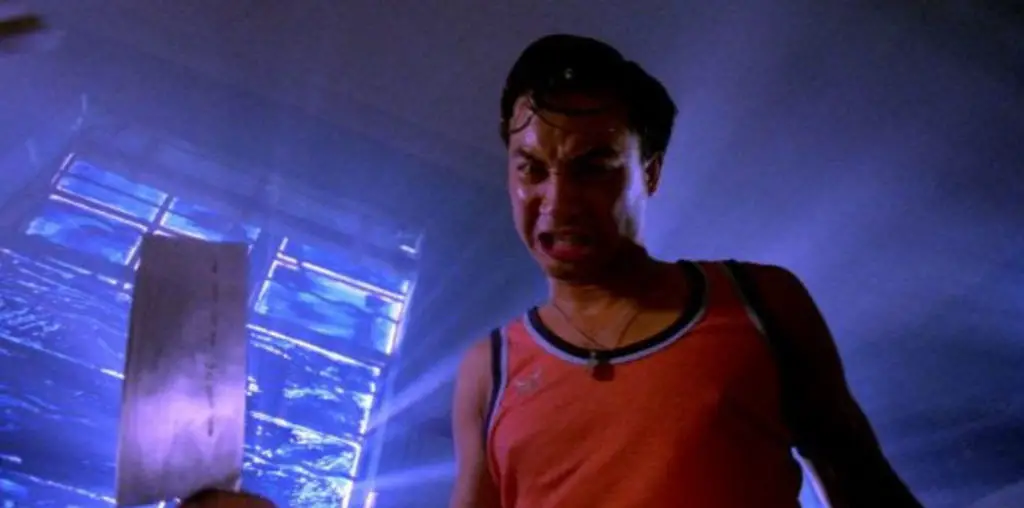
In a recent interview, Moviefone asked the Coens if they’ll ever make a sequel to any of their works. Ethan replied that “Old Fink,” about an aging Barton circa late 1960s, is in the works.
We’ve been through this before. Always guarded when asked to self-analyze, the Coens love to drop jokes, even puzzles, to throw off interviewers and fans. These jests aren’t all that different than those in their films: a character’s surprising murder, a slightly-more-clever-than-goofy film allusion. For a 2000 biography, writer Ronald Bergan asked them which films they found to be most influential. Ethan and Joel discussed how much they loved Doris Day films, which became their greatest inspiration. The peculiar “two-head director” can seem convincing when tossing out bullshit like this, so I understand why Bergan fell for it. Ethan made “Old Fink” sound intriguing, as if it were well thought out and not another Coen-crack.
But, as it turns out, the brothers already made “Old Fink,” revised but with the same plot trajectory and effect. In the late-60s era “A Serious Man,” Larry Gopnik (like Barton Fink) is condemned by a force far greater than himself. Also like “Fink,” Larry’s story presents a number of dream sequences, and his growing doom becomes surreal, just as Barton gets submerged in nightmare.
There’s solid evidence as to why the Coens would revamp “Fink” into “Serious.” The brothers are genre filmmakers, not in the sense that they stick to one formula, but revise classic patterns and archetypes into new forms. The pattern is self-borrowed here, but to a fresh effect. It’s nearly as rewarding as the brothers great revision-chain: “No Country for Old Men” invoking and revamping “Fargo,” as the latter film did with “Blood Simple,” their debut, before that.
Not that “Fink” is the deepest archetype within “Serious” – that would be The Book of Job, an ancient myth with a theme that can resurface in anyone’s sour moments. The Coens pocket Job as they did Homer for the Depression-era “Oh Brother, Where Art Thou?” They treat classical/religious myths no differently than those from classical Hollywood, like the gangster tale (“Miller’s Crossing”) and classic noir (“Fargo” and number of their films).
Physics prof Larry Gopnik better be ready to suffer wrath in the hands of the Coens. His soon-to-be-Mitzvahed son is on the wrong track, rocking out on his transistor headset during Hebrew class. Yet this is just an inkling of Larry’s greater problems: his wife (newcomer Sari Lennick) reveals her affair and logically concludes that their marriage should end. Her cold, bitchy logic seems like the end to a grander scheme; she’s so fateful that Larry remains helpless. Meanwhile, their daughter screams about a house-guest uncle monopolizing the bathroom. It turns out he has to assuage a medical issue that, we soon learn, represents his manifested unease – something that Larry discovers only recently in his own life. At work, the department head hints about Larry’s job not being so secure, while a disgruntled Asian student blackmails him by planting a bribe on his desk.
The Coens present the accumulating chaos at home and work in a surreal fashion, as if Larry’s life is distorting into the unrecognizable. Fink enters his nightmare by going West, from New York to the hellish end of American existence the Coens call Hollywood. Larry, however, sees hell emerging right underneath him. When on the roof adjusting the TV antenna, he looks down onto the world that is failing him. From here he can see the house of suspicious “Goys” next door – Larry later dreams them to be murderous anti-Semites, where they come to symbolize demons. He looks to the backyard of the opposite home, to a topless temptress who would be a sinful escape from his pain. As in “Fink,” all these roles are stylized, artificial; like dream images, they represent fears and desires more than people.
If all this sounds dour, remember that we’re talking the Coens here, who never fail to make fatalism into a humorous subject. In duty to his religion, Larry visits Rabbis for an answer, and his desire to see the best is futile. When Larry sees another Rabbi, the Coens drop a hilarious mock-parable about a dentist who discovers a Hebrew distress signal on the back of a Goyim’s teeth. Michael Stuhlbarg, as Larry, reacts in wide-eyed disbelief, extending his humorous everyman portrayal to the most bizarre of scenes.
His hard road is hardly a surprise. The film’s prologue presents Larry’s Russian ancestors being visited – and thus, cursed – by what they think to be a Dybbyk, a wandering body from Jewish folklore that’s possessed by a demon. This scene’s surprise turn plays like a thriller’s pivotal moment, while not skipping on any humorous opportunities. Once again, the Coens’ tale of the damned is damn funny.
